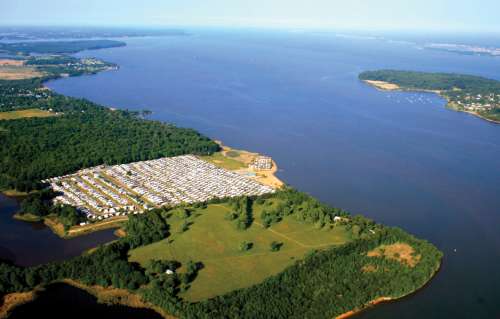We Can’t Simply Regulate Our Way to a Solution

The land use and water quality relationship in the Chesapeake Bay watershed is a widely discussed topic among agricultural professionals, land owners, state and federal agencies, environmentalists and even school children today. In fact, as a sixth grade student I attempted a small project to demonstrate the impact phosphates from average dish detergent had on aquariums of aquatic life developed to mimic a fresh water stream. Even as a sixth grader in 1987 I was learning about the downstream impacts of pollutants in a watershed. While I am no man under the mountain in my experience working on land use issues, the fact is clear that broadly our Chesapeake Bay region is well versed in the factors related to land use and watershed health and the modeling that has been done by the Environmental Protection Agency and others has been used as fact more often than theory.
Some of these theories are being challenged by research scientists like James L. Glancey at the University of Delaware. Mr. Glancey’s work challenges the amount of nutrient levels of nitrogen that are 55 percent lower than the EPA’s decades old, lab based standards. The basic assertion has been that as nutrients in the form of phosphorous and nitrogen are applied to the landscape from poultry litter, these nutrients are absorbed into the soil and then transferred into surrounding creeks and rivers through run off from rain. In the simplest terms this is the concept. There are assumptions made in the modeling about the amount of nutrients added to the landscape and the rate these nutrients are absorbed in the soil; how much is accumulated in biomass of crops grown each year. Until now there has been little compelling evidence to challenge the assumptions made in the EPA modeling.
Regulating the amount of nutrients reaching the waters in the Chesapeake creates much debate among regulators in the Bay states about a “pollution diet” which relates to a concept proposed by the Environmental Protection Agency and others to create a maximum amount of nutrients that can be allowed by regulation to reach waters of the Chesapeake Bay. It is referred to as the Total Maximum Daily Load (TMDL). TMDLs are not unique to the Chesapeake as there are others around the country for different watersheds but they are often related to point source pollution issues, not agriculture or other non point sources. This discussion of a pollution diet is complex and I do not have the space in this blog or your attention span to detail the pros and cons or potential outcomes if a strict TMDL was developed broadly for agricultural land. The principal purpose of this is to encourage this important work to be further analyzed, and bring to light that the modeling associated with establishing policy for water quality standards in the watershed are not fully vetted to date. It is paramount that policy can be made not based on old models or assumed fact but on real data and empirical findings from agricultural operations.
To this end, it seems that Maryland and Virginia are taking steps with farm owners to create a time frame of implementation during which farm owners with have the ability to enroll their farm into a program which meets current water quality standards with the expectation that no additional regulation can be implemented on their land for the next several years. In Maryland this time frame is 10 years and in Virginia it is 9 years. The states of Pennsylvania and Delaware are considering similar legislation.
Over the past few years since the Hudson case here in Maryland there has been a lot of trust lost amongst farmers, state and federal agencies and environmental groups. A solution to the challenge and a restored Bay watershed is far from near and while there is much at stake in the Bay to maintain this important resource and provide it for future generations it must be done with policy tools and programs that will lead to a solution and positive results. This won’t likely be achievable without consensus among the stakeholders and due to the regulatory approach from the EPA and its partnering regulatory state agencies currently underway it appears there is little chance of a collective agreement developing in the near term. It might be time to bring in the sixth graders to teach everyone about getting along and solving problems together.



